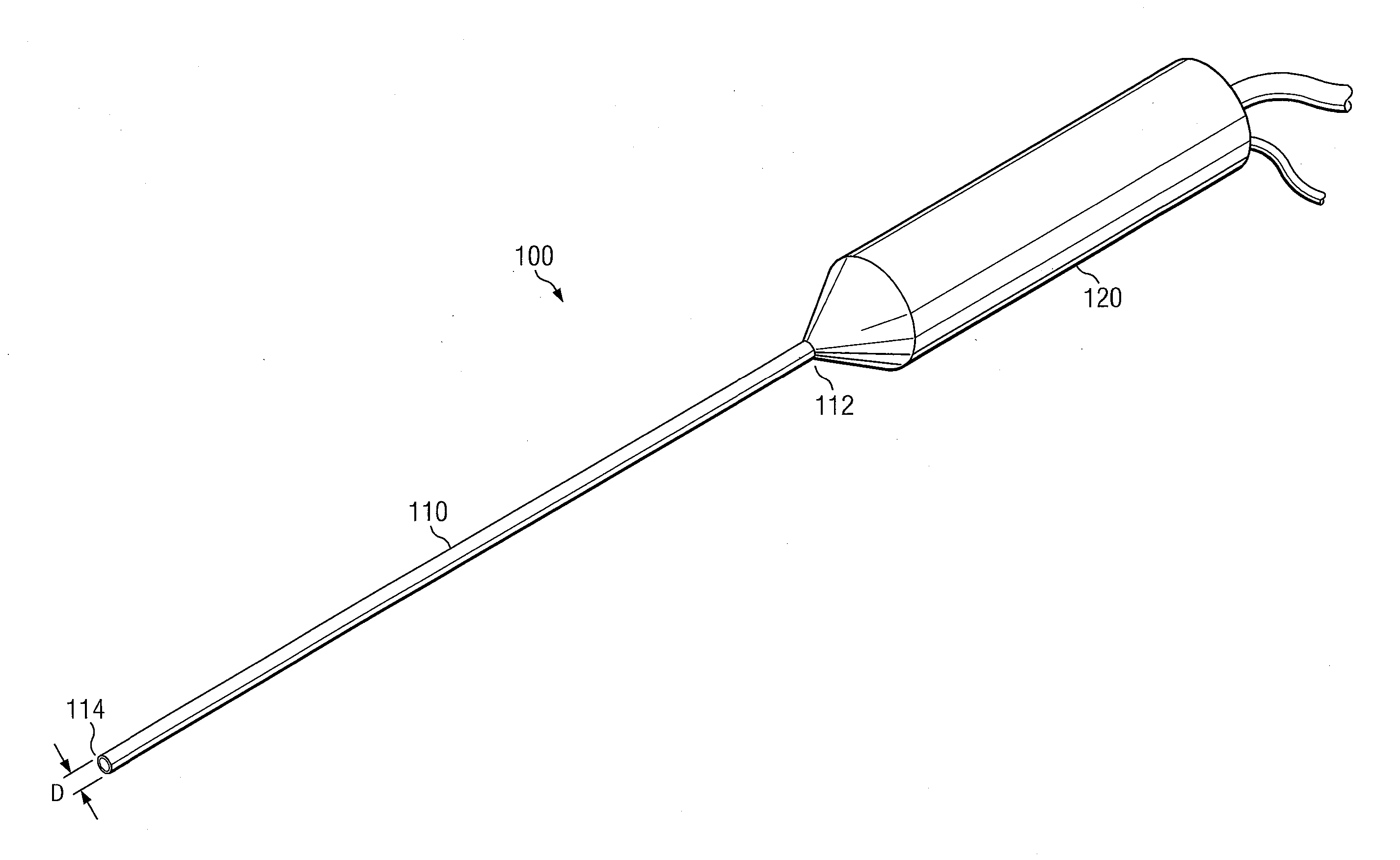Method for removal of retained lens fragments using small diameter fragmatome
a fragmatome and small diameter technology, applied in the field of small diameter fragmatome, can solve the problems of large incisions, large trauma to patients, and large design of conventional fragmatomes, and achieve the effect of reducing trauma to patients as a result of the operation and improving recovery tim
- Summary
- Abstract
- Description
- Claims
- Application Information
AI Technical Summary
Benefits of technology
Problems solved by technology
Method used
Image
Examples
Embodiment Construction
[0026]FIG. 1 is an outline illustration of a fragmatome 100 in accordance with a first aspect of the present invention. Fragmatome 100 comprises a tubular member 110 with a substantially constant outside diameter D. Tubular member 100 provides proximal end 112 and distal end 114. Fragmatome 100 may be constructed conventionally. However, in accordance with the invention, D is no more than 23-gauge (about 0.57 mm) in diameter. With further reference to FIG. 1, handle 120 is attached to a proximal end 112. Although not specifically illustrated, it will be understood that fragmatome 100 is disposed to deliver emulsification energy at distal end 114. Such emulsification energy may be, for example and without limitation, ultrasonic energy or laser energy. The source of emulsification energy may be conventional, and may be deployed in handle 120 or elsewhere in emulsification energy communication with distal end 114.
[0027]FIG. 1 shows tubular member 110 being of substantially constant dia...
PUM
 Login to View More
Login to View More Abstract
Description
Claims
Application Information
 Login to View More
Login to View More - R&D
- Intellectual Property
- Life Sciences
- Materials
- Tech Scout
- Unparalleled Data Quality
- Higher Quality Content
- 60% Fewer Hallucinations
Browse by: Latest US Patents, China's latest patents, Technical Efficacy Thesaurus, Application Domain, Technology Topic, Popular Technical Reports.
© 2025 PatSnap. All rights reserved.Legal|Privacy policy|Modern Slavery Act Transparency Statement|Sitemap|About US| Contact US: help@patsnap.com



